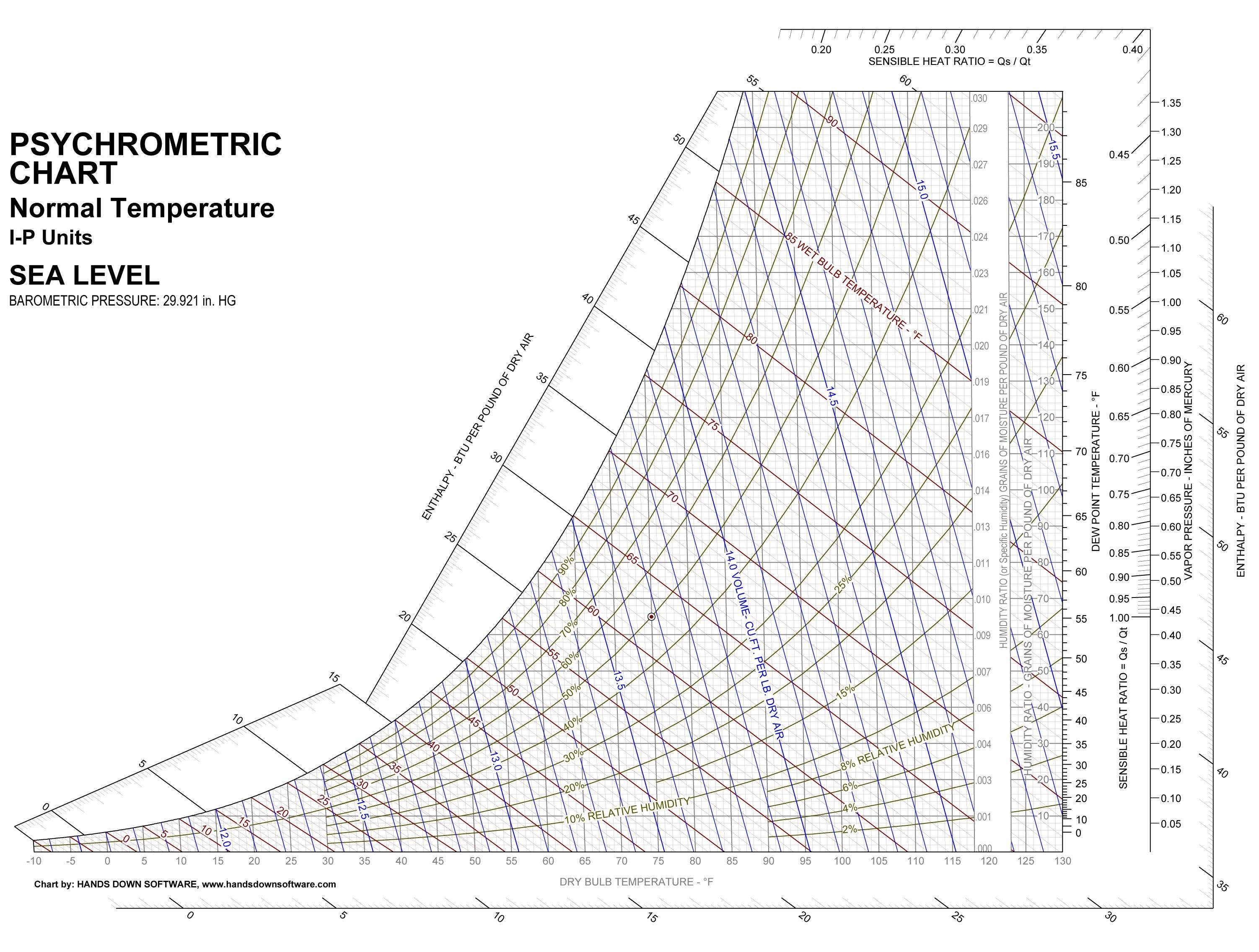Welcome to our comprehensive guide on the psychrometric chart. The tool that is used by many professionals across various industries to accurately and efficiently analyze air properties and conditions. The chart helps to determine different parameters such as relative humidity, dew point temperature, specific humidity, and many other measures.
Understanding the Psychrometric Chart
The psychrometric chart is a graph that displays the relationship between dry-bulb temperature, wet-bulb temperature, and relative humidity. It is used to analyze the properties of moist air and to determine critical parameters concerning air conditioning, heating, and refrigeration. Essentially, it is the most useful tool for professionals working in HVAC, engineering, construction, agriculture, and many other fields.
 As we can see in the image above, the chart is divided into different sections. The horizontal axis represents dry-bulb temperature measured in degrees Celsius or Fahrenheit, while the vertical axis represents the humidity ratio, represented as grams of water vapor per kilogram of dry air.
As we can see in the image above, the chart is divided into different sections. The horizontal axis represents dry-bulb temperature measured in degrees Celsius or Fahrenheit, while the vertical axis represents the humidity ratio, represented as grams of water vapor per kilogram of dry air.
The curved lines that run diagonally across the chart are called the saturation lines, which show the relationship between dry-bulb temperature and the maximum amount of moisture that air can hold. The dew-point temperature, where air becomes saturated with water vapor, is located at the intersection of the dry-bulb temperature and the saturation lines.
The diagonal lines that intersect the curve are called the constant enthalpy lines and represents a specific amount of energy transferred to or from the air during a process. It shows the heating or cooling required to change from a particular dry-bulb temperature to another while maintaining a constant specific enthalpy value.
The Importance of Psychrometric Chart in HVAC Industry
The HVAC industry is one of the largest industries in the world, accounting for billions of dollars, with a vast array of equipment and processes that rely on a clear understanding of the concepts represented on the psychrometric chart. The chart is essential in the design of any HVAC system, from the smallest residential set-up to the largest industrial applications.
The chart helps professionals to determine heat load calculations for buildings, select the correct equipment size, and identify potential problems, such as mold growth, due to excessive moisture content in the air. It is also critical in maintaining proper indoor air quality, which is essential for the health and comfort of building occupants.
Applications of the Psychrometric Chart
The psychrometric chart has a wide range of applications in many different industries. Some of the uses of the chart include:
Heating and Cooling System Design
The chart helps engineers to design HVAC systems by selecting the correct equipment, duct sizing, and identifying the correct type of systems to use for a particular space. This is important in reducing unnecessary expenses and ensuring that the system operates efficiently while maintaining the desired level of comfort.
Refrigeration and Air Conditioning System Design
Professionals use the chart to analyze refrigeration and air conditioning processes to determine the required cooling load and select the appropriate refrigerant system.
Agriculture
Psychrometric chart is used in the agriculture industry to determine the optimal temperature and moisture conditions for growing crops.
Manufacturing
Manufacturing processes require proper humidity control, and the psychrometric chart is used to select the correct equipment and maintain the desired conditions for optimal efficiency.
Conclusion
The psychrometric chart is a powerful and invaluable tool for professionals working in various industries. Its applications range from heating and cooling system design, refrigeration and air conditioning, agriculture, manufacturing, and many other ways. By using the chart, professionals can analyze and interpret the complex interactions of air properties, leading to the most efficient and optimal design choices for their systems.
Thank you for reading, and we hope that this comprehensive guide on the psychrometric chart has provided you with a better understanding of its importance in various industries and applications.